Ch 10 - Marketing Channels: Delivering Customer Value
1/28
Earn XP
Name | Mastery | Learn | Test | Matching | Spaced |
|---|
No study sessions yet.
29 Terms
supply chains
upstream partners supply the raw materials, components, parts, info, finances, and expertise needed to create a product or service
downstream partners serve as distribution channels that link the firm and its customers
value delivery network
network composed of the company, suppliers, distributors, and ultimately, customers who partner with each other to improve the performance of the entire system in delivering customer value
marketing/distribution channel
interdependent organizations that help make a product or service available for use or consumption
how distributor reduces the number of channel transactions
By consolidating inventory and enabling bulk purchasing
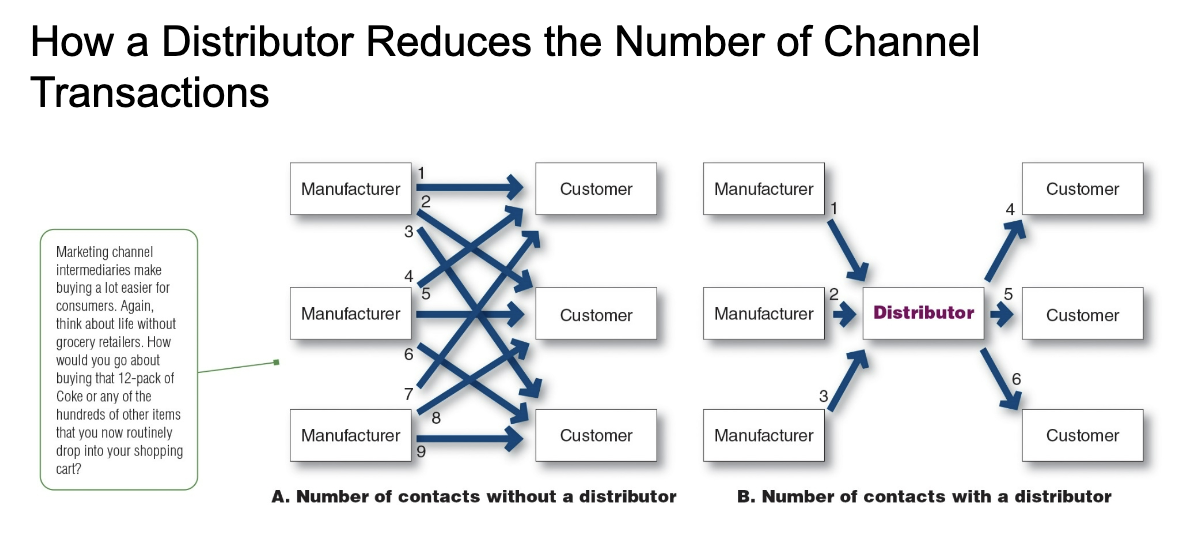
key functions performed by channel members
help to complete transactions
help to fulfill completed transactions
channel level
layer of intermediaries that performs work in bringing the product and its ownership closer to final buyer
types of flows that connect institutions in channels
physical flow of products
flow of ownership
payment flow
information flow
promotion flow
consumer and business marketing channels
The systems through which products flow from producers to consumers and businesses. These channels include direct and indirect pathways that facilitate the exchange of goods and services
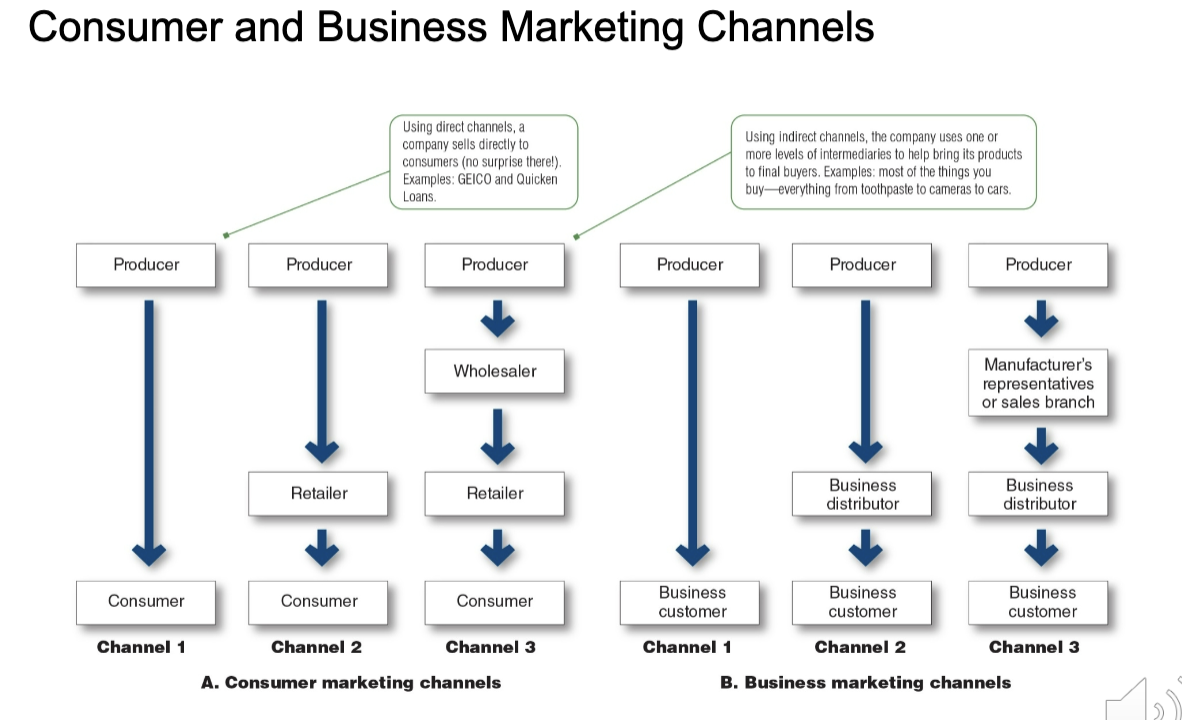
channel conflict
disagreements among marketing channel members of goals, roles, and rewards
comparison of conventional distribution channel with vertical marketing system
A comparison highlights the differences in efficiency and coordination. Conventional channels involve multiple independent entities, while vertical marketing systems integrate producers, wholesalers, and retailers to enhance synergy and reduce conflict.
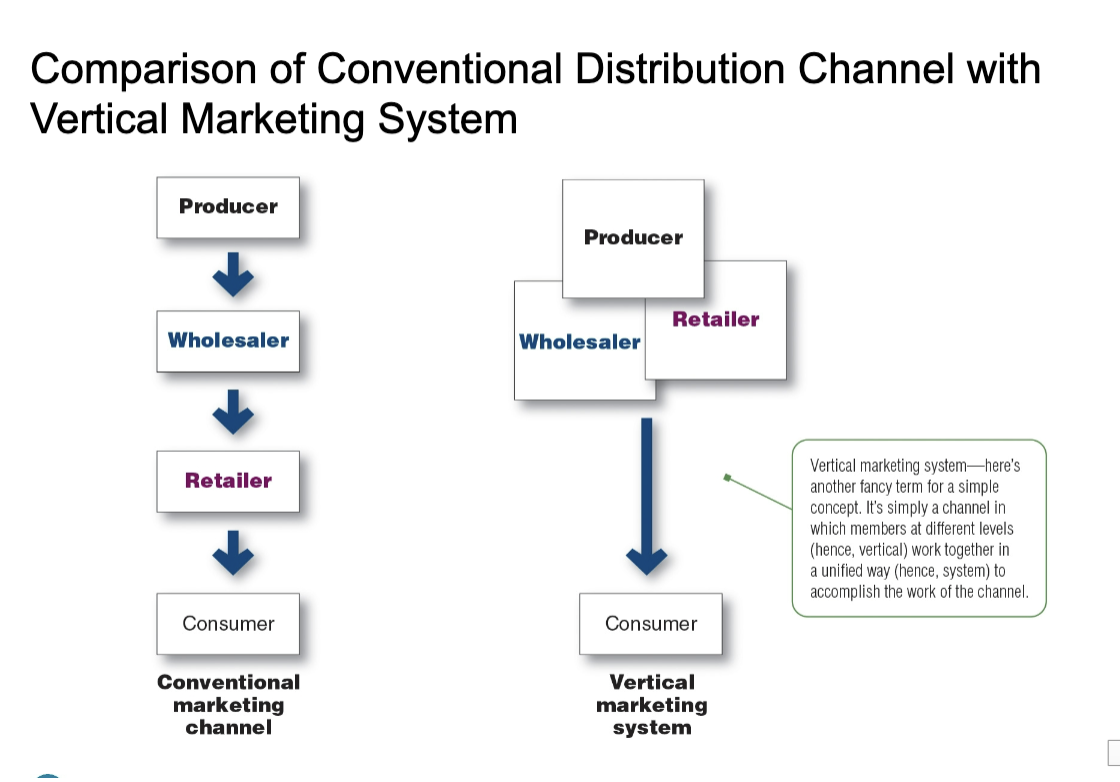
vertical marketing system (VMS)
consists of producers, wholesalers, and retailers acting as a unified system
types of VMS
corporate
contractual
administered
horizontal marketing system
two or more companies at one level join together to follow a new marketing opportunity
multichannel distribution system
a single firm sets up two or more marketing channels to reach customer segments
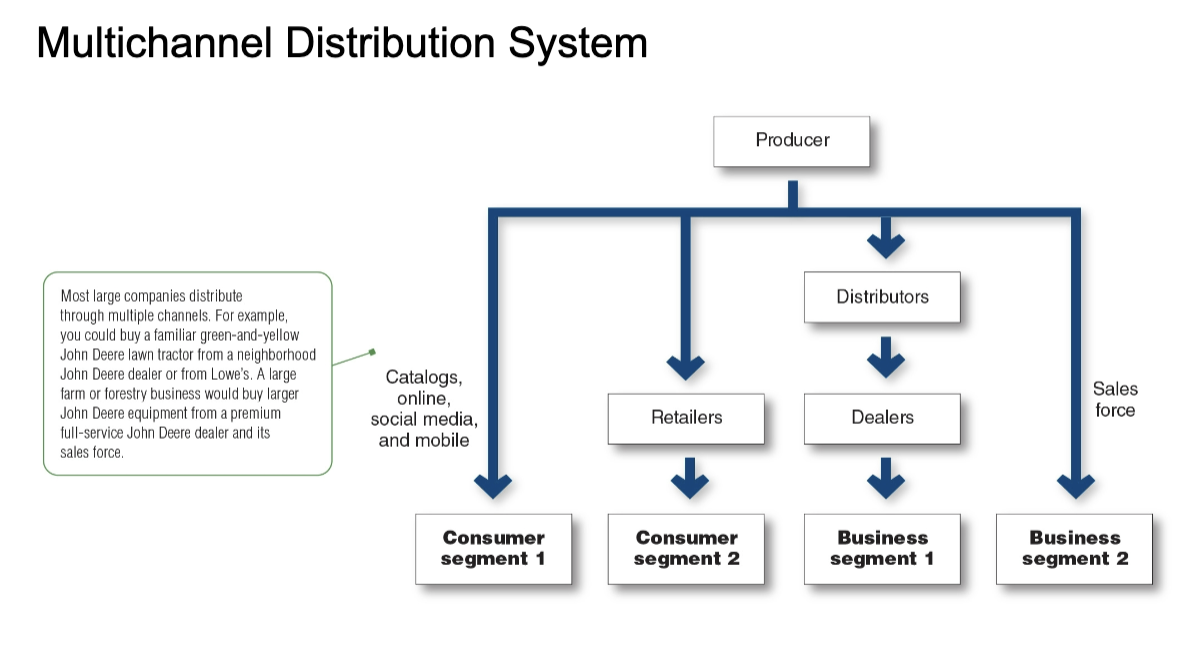
advantages of multichannel distribution systems
expansion of sales and marketing coverage
tailor-made products and services for the specific needs of customer segments
disadvantages of multichannel distribution systems
harder to control
generates conflict
disintermediation
occurs when product or service producers cut out marketing channel intermediaries or when radically new types of channel intermediaries displace traditional ones
marketing channel design
involves designing effective marketing channels by
analyzing customer needs
setting channel objectives
identifying major channel alternatives
evaluating the alternatives
marketing logistics/physical distribution
planning, implementing, and controlling the physical flow of materials, final goods, and related information from points of origin to consumption
customer-centered logistics
marketplace backwards to the factory or sources of supply
outbound logistics
inbound logistics
reverse logistics
supply chain management
the management of the flow of goods and services, including all processes that transform raw materials into final products
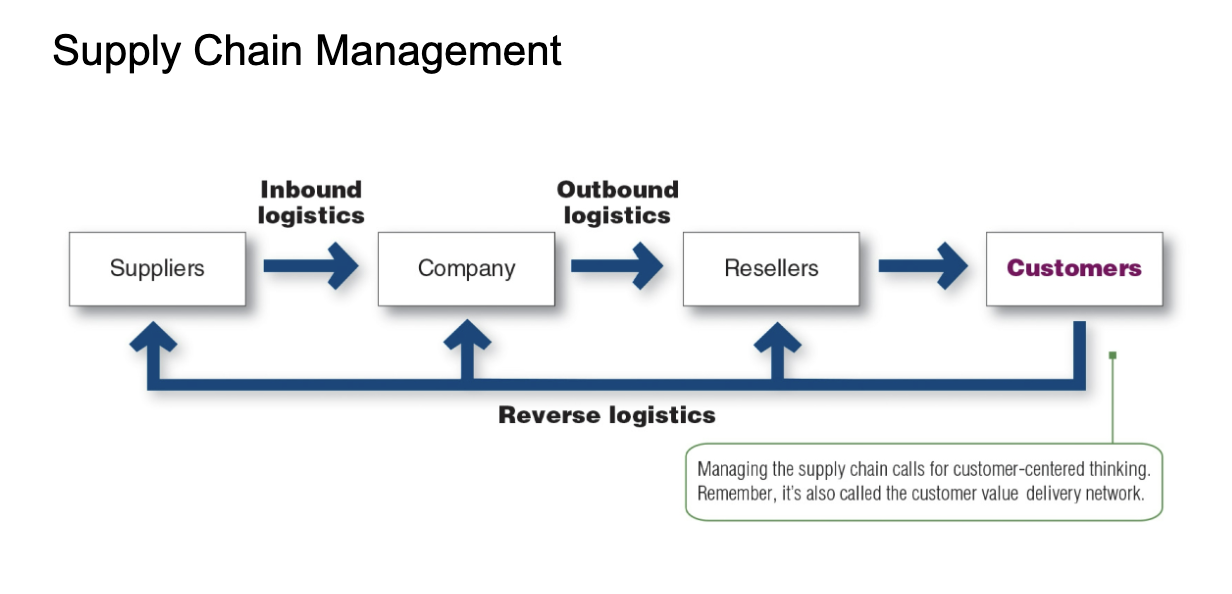
logistics functions
warehousing
inventory management
transportation
logistics information management
warehousing
storage warehouses store goods for moderate to long periods
distribution centers
large, highly automated warehouses that receive goods, take orders, fill them, and deliver goods to customers
transportation
in shipping goods to their warehouses, dealers, and customers, companies can choose among many transportation modes, including truck, rail, water, pipeline, and air
factors affected by choice of transportation
pricing of products
delivery performance
condition of goods
customer satisfaction
modes of transportation
trucks
railroads
water carriers
pipelines
air carriers
internet
multimodal transportation
combining two or more modes of transportation
piggyback, fishyback, trainship, air truck
logistics information can be shared and managed through
electronic data interchance - EDI
vendor-managed inventory - VMI